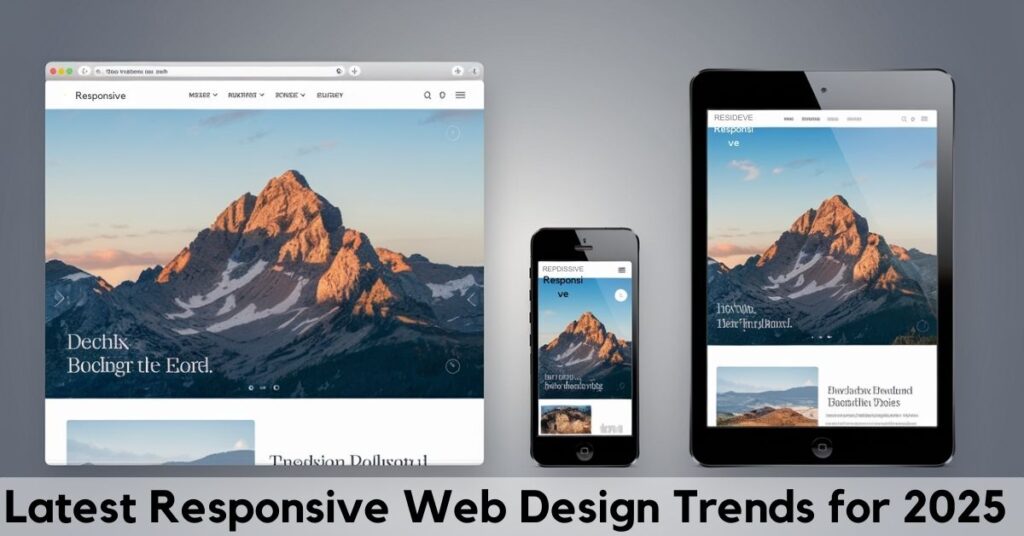In today’s digital world, websites and web applications are everywhere. From simple blogs to complex e-commerce platforms and SaaS products, everything relies on web development. A full-stack web developer is someone who can work on both the front-end (what users see) and back-end (server, database, and application logic) of a website or application. In 2025, full-stack developers are more in demand than ever because businesses prefer professionals who can manage the entire web development process.
This article is a complete roadmap to help you become a full-stack web developer in 2025. Whether you’re a beginner or someone looking to upgrade your skills, this guide will walk you through every essential technology, tool, and best practice in simple, easy-to-understand language.
Foundational Skills
Before diving into advanced topics, it’s important to build a strong foundation. These are the core skills every developer must learn first:
HTML5: HTML (Hypertext Markup Language) is the building block of web pages. HTML5 allows you to create the structure of a web page using elements like headings, paragraphs, lists, images, and more. It’s essential to learn semantic HTML, which means using the correct tags for content (like <article>, <nav>, <footer>).
CSS3: CSS (Cascading Style Sheets) is used to style HTML elements. CSS3 includes new features like Flexbox and Grid that make layout and design much easier. Learn how to create responsive layouts that work on different screen sizes.
Responsive Design: Learn how to make websites that look good on all devices (mobile, tablet, desktop). Tools like media queries in CSS help with this.
CSS Frameworks: Tools like Tailwind CSS and Bootstrap can speed up development by giving you pre-written classes and components.
JavaScript (ES6+): JavaScript makes websites interactive. Start with the basics like variables, functions, loops, and conditionals. Then move on to ES6+ features such as arrow functions, promises, async/await, destructuring, and modules.
Modern Front-End Frameworks
Once you’re comfortable with HTML, CSS, and JavaScript, it’s time to learn a front-end framework.
React.js (with Next.js): React is the most popular front-end library in 2025. It allows you to build user interfaces using components. Learn about JSX, props, state, lifecycle methods, and hooks. Next.js is a framework built on top of React for building fast, SEO-friendly websites.
Vue.js: Vue is known for its simplicity and flexibility. It’s great for beginners and offers a clear structure for building apps.
Angular: Angular is a full-featured framework often used in enterprise-level projects. It has a steeper learning curve but is very powerful.
Styling: Learn how to integrate Tailwind CSS or styled-components with your front-end framework to make styling easier and more consistent.
Back-End Mastery
The back end is the part of the application that handles data, business logic, and communication with databases.
Node.js: Node allows you to run JavaScript on the server. It’s fast and scalable and works well with front-end JavaScript frameworks.
Express.js: Express is a lightweight framework for building APIs and web applications using Node.js. Learn about routes, middleware, request and response objects, and error handling.
Alternatives:
- Python (Django/Flask): Great for data-heavy or AI-based applications.
- Java (Spring Boot): Common in large enterprise applications.
- PHP (Laravel): Known for simplicity and rapid development.
API Development: Understand how to create RESTful APIs and learn the basics of GraphQL for flexible data querying.
Databases & Data Management
Every web app needs a place to store data. That’s where databases come in.
SQL Databases: Learn about relational databases like MySQL and PostgreSQL. Understand concepts like tables, rows, columns, relationships, indexes, and normalization.
NoSQL Databases: NoSQL databases like MongoDB store data in JSON-like formats. They’re great for flexible data models and fast development.
ORMs (Object-Relational Mappers): Tools like Sequelize (Node.js), Mongoose (MongoDB), or Prisma make it easier to work with databases using JavaScript.
Data Modeling: Learn how to design your database schema to support your application’s features efficiently.
Version Control
Version control allows you to track changes in your code and collaborate with others.
Git: Learn commands like git init, git clone, git add, git commit, git push, git pull, and git merge.
GitHub/GitLab/Bitbucket: These are platforms that host your Git repositories and offer features like pull requests, issue tracking, and CI/CD integrations.
Branching Strategies: Learn how to work with branches and use workflows like Git Flow for organized development.
DevOps & Deployment
Once your app is ready, you need to host it on the internet.
CI/CD Pipelines: Learn how to automate testing and deployment using continuous integration and continuous deployment tools like GitHub Actions or GitLab CI.
Hosting Platforms:
- Frontend: Vercel, Netlify, GitHub Pages
- Backend: Heroku, Render, Railway, AWS EC2
Containers and Docker: Docker allows you to package your application with all its dependencies. Learn how to write a Dockerfile and use Docker Compose.
Environment Variables: Store secrets like API keys and database URLs securely.
Domain and SSL: Learn how to connect a custom domain and add SSL certificates for HTTPS.
Advanced Topics
Once you are confident in the basics, it’s time to move to advanced areas.
Progressive Web Apps (PWAs): PWAs are web applications that work like native apps. They can work offline, send push notifications, and be installed on a user’s home screen.
WebAssembly: If performance is critical, WebAssembly allows code written in other languages (like Rust or C++) to run in the browser.
Real-Time Applications: Learn how to build apps like chats or live notifications using WebSockets and libraries like Socket.io.
State Management:
- Redux: Commonly used with React for managing complex states.
- Vuex/Pinia: Used with Vue applications.
Testing:
- Unit Testing: Using Jest or Mocha to test individual functions.
- End-to-End Testing: Tools like Cypress test the whole app from the user’s perspective.
AI, Web3 & Emerging Trends
The tech world keeps evolving, and staying ahead means knowing what’s next.
AI Integration: Learn how to use APIs from services like OpenAI to add AI features (like chatbots or content generation) to your apps.
Web3 Basics: Understand blockchain, smart contracts, and how decentralized applications (dApps) are built. Learn platforms like Ethereum and tools like MetaMask.
These are optional but can be valuable in specific industries.
Soft Skills & Portfolio Development
Soft skills are just as important as technical skills.
Problem Solving: Use platforms like LeetCode, HackerRank, or CodeWars to improve your algorithmic thinking.
Communication: Good communication is key in team environments. Learn how to write clean documentation and explain your ideas.
Project Building: Create real-world projects like:
- A blog platform with user authentication
- An e-commerce store with shopping cart and payment gateway
- A real-time chat application
Portfolio Website: Build a personal website to showcase your projects, resume, and contact information.
Open Source Contribution: Find projects on GitHub to contribute to. It improves your skills and shows employers your ability to work in a team.
Career Growth
Once you have the skills and portfolio, it’s time to grow your career.
Freelancing: Start by working on small gigs on platforms like Upwork, Fiverr, or Toptal. It’s a great way to gain experience and earn.
Job Hunting: Apply for junior developer roles. Customize your resume and cover letter for each application.
Networking: Join online communities, attend webinars, and participate in hackathons. Platforms like LinkedIn, Dev.to, and Reddit are great for connecting with other developers.
Mentorship: Find mentors who can guide your journey and help you grow faster.
Continuous Learning
Technology evolves quickly. Make learning a habit.
Follow Tech News: Subscribe to newsletters, watch YouTube channels, and read blogs to stay updated.
Try New Tools: As new frameworks and libraries come out, experiment with them. For example, TypeScript is becoming more common in JavaScript projects.
Document Your Learning: Write blogs or create YouTube videos about what you learn. Teaching others helps reinforce your knowledge.
Conclusion
Becoming a full-stack web developer in 2025 is a journey that requires dedication, practice, and a willingness to keep learning. With this roadmap, you now have a clear path to follow. Start small, be consistent, and build real-world projects. With time, you’ll have the skills to build complete web applications and grow your career in tech.
Whether you want to freelance, join a startup, or work for a big tech company, the opportunities are endless for skilled full-stack developers in 2025 and beyond.



